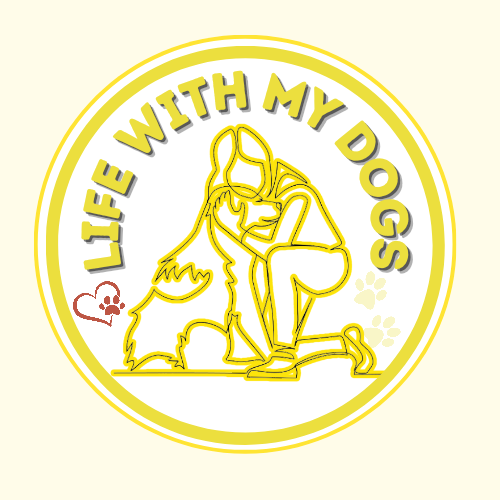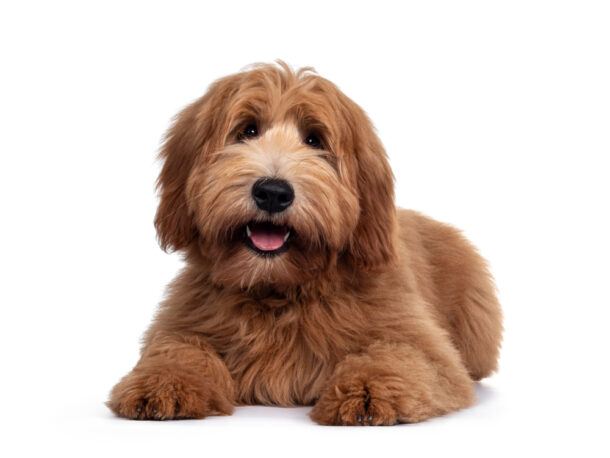LifeWithMyDogs is supported by our audience. When you purchase through one of our links, we may earn a small affiliate commission. As an Amazon Associate I earn from qualifying purchases. Your cost is not affected.
**********
Grooming a dog with floppy ears requires a gentle approach and attention to detail to ensure your pet’s comfort and health. Dogs with floppy ears, such as Basset Hounds or Cocker Spaniels, often require more frequent and specific grooming routines due to their unique ear structure.
Their adorable ears can trap moisture, wax, and debris, which makes them more susceptible to infections if not properly cared for. Understanding how to safely and effectively groom your dog’s ears is essential to keep them clean, dry, and healthy.
Grooming Tips for Dogs with Floppy Ears: Essential Care Routines

Understanding the anatomy of your dog’s ears can help you identify when they need a bit more TLC. Ear care is not just about aesthetics. It’s vital to your dog’s overall well-being.
With the right tools and technique, you can prevent common issues associated with floppy-eared breeds and make the grooming experience enjoyable for both you and your furry friend. This article will guide you through everything you need to know about grooming your dog’s floppy ears, from selecting the right tools to maintaining them after grooming.
Key Takeaways
- Regular grooming is vital for dogs with floppy ears to prevent infection.
- Proper tools and techniques are essential for safe and effective ear grooming.
- Consistent aftercare ensures long-term ear health and comfort for your dog.
Understanding Canine Ear Anatomy

Before grooming your dog with floppy ears, it’s essential to understand their ear anatomy to prevent any injury and to identify issues early.
Types of Floppy Ears
Floppy ears, known as pendulous ones, come in various shapes and sizes. For instance, Basset Hounds have very long and heavy ears, while Cocker Spaniels possess ears that are medium in length but covered in wavy fur. The structure of these ears means they hang down, which can affect air circulation within the ear canal.
Common Ear Problems
Dogs with floppy ears are prone to ear issues such as infections due to the reduced airflow, which creates a dark, warm environment that can foster bacterial and yeast growth. Ear plucking can be a controversial topic, but a practice is done to potentially reduce these risks. Regular checks are, therefore, crucial for the early detection of common problems like ear mites, wax build-up, or inflammation.
Basics of Ear Grooming
Proper ear grooming is crucial for dogs with floppy ears as it helps prevent infections and maintain overall ear health. Let’s break down the basic steps to keep those ears clean and healthy.

Inspection Routine
Begin with a regular inspection of your dog’s ears. Look for signs of redness, odor, discharge, or irritation.
These can be indications of an infection. You should conduct these inspections at least once a week to ensure any issues are spotted early.
Cleaning Essentials
When it comes to cleaning, you’ll need a few supplies:
- A quality ear-cleaning solution recommended by veterinarians.
- Cotton balls or gauze pads for gentle cleaning.
- Tweezers may be necessary to remove any large debris gently.
Here’s the process:
- Wet a cotton ball with the ear cleaner.
- Wipe the visible parts of the ear and ear folds.
- Apply the cleaner as per instructions, avoiding over-saturation.
- Allow your dog to shake their head to help dislodge any deeper debris.
- Dry the ears thoroughly with a clean cotton ball or gauze.
Remember: Never insert anything deep into your dog’s ear canal. If you notice anything concerning during your routine cleaning or inspection, consult with a veterinarian for guidance.
Selecting the Right Grooming Tools

When grooming dogs with floppy ears, it’s crucial to have the right tools at your disposal. These tools can help prevent infections and effectively maintain your dog’s ear health.
Ear Cleaning Solutions
Choosing the right ear-cleaning solution is vital for dissolving wax and debris that accumulate in your dog’s ears. Look for solutions that are specifically formulated for canine ears to ensure they are gentle and pH-balanced. Avoid solutions with excessive chemicals that could irritate.
Grooming Wipes and Cloths
Grooming wipes and cloths come in handy for wiping the visible parts of the ear and around the ear flap. Ensure they’re soft yet durable and free from harmful additives or alcohol. For convenience, select wipes that are pre-moistened with a dog-safe cleaning solution.
Tweezers and Hemostats
Finally, tweezers and hemostats are often used to remove hair from a dog’s ear canal, a common breeding ground for bacteria and yeast. Use rounded-tip tweezers or hemostats to carefully pluck away the hair, but only if recommended and demonstrated first by a professional groomer or veterinarian.
Step-by-Step Grooming Procedure

Proper grooming is essential for dogs with floppy ears to prevent infections and maintain overall ear health. This step-by-step procedure will guide you through the process effectively.
Holding the Ear Properly
To begin, hold your dog’s ear gently but firmly. Lay their ear flap back to expose the ear canal, ensuring you have a clear view and access. It’s crucial to support the base of the ear to avoid discomfort or potential injury.
Cleaning the Ear Canal
- Moisten a cotton ball with an ear-cleaning solution recommended by veterinarians.
- Wipe the accessible part of the ear canal gently but thoroughly.
- Never insert Q-tips or similar objects deep into the ear canal, as this could cause damage.
It is important to clean only the areas you can see to avoid harming the sensitive structures deeper in the ear.
Drying the Ears After Cleaning
After cleaning, the ear must be dried to prevent moisture buildup, which could lead to infections. Use a dry towel or cotton ball to gently pat the inside of the ear flap and around the ear opening. Make sure the ears are completely dry before finishing the grooming session.
Preventing Ear Infections

To ensure the well-being of your dog, particularly if they have floppy ears, preventive measures against ear infections are crucial. Consistency in care can make all the difference in maintaining your pet’s ear health.
Regular Check-Ups
Frequency:
- Weekly inspection of your dog’s ears is recommended.
- More frequent checks during high-risk situations, like after swimming or baths.
What to Look For:
- Inside the ear, it should be a healthy pink color.
- No excessive wax build-up, nor discharge, or foul odor.
Ear Infection Symptoms
Common Signs:
- Head shaking or tilting
- Excessive scratching
- Redness or swelling
- Unpleasant smell
- Behavior changes, such as depression or irritability
Appearance:
Watch and monitor symptoms such as discoloration, discharge, or visible irritation in the ear canal.
When to Consult a Vet
Immediate Attention: If you notice any symptoms of an ear infection, then contact your vet promptly.
Preventive Visits:
Regular check-ups should include an ear exam to catch issues before they become severe.
Grooming Challenges and Solutions
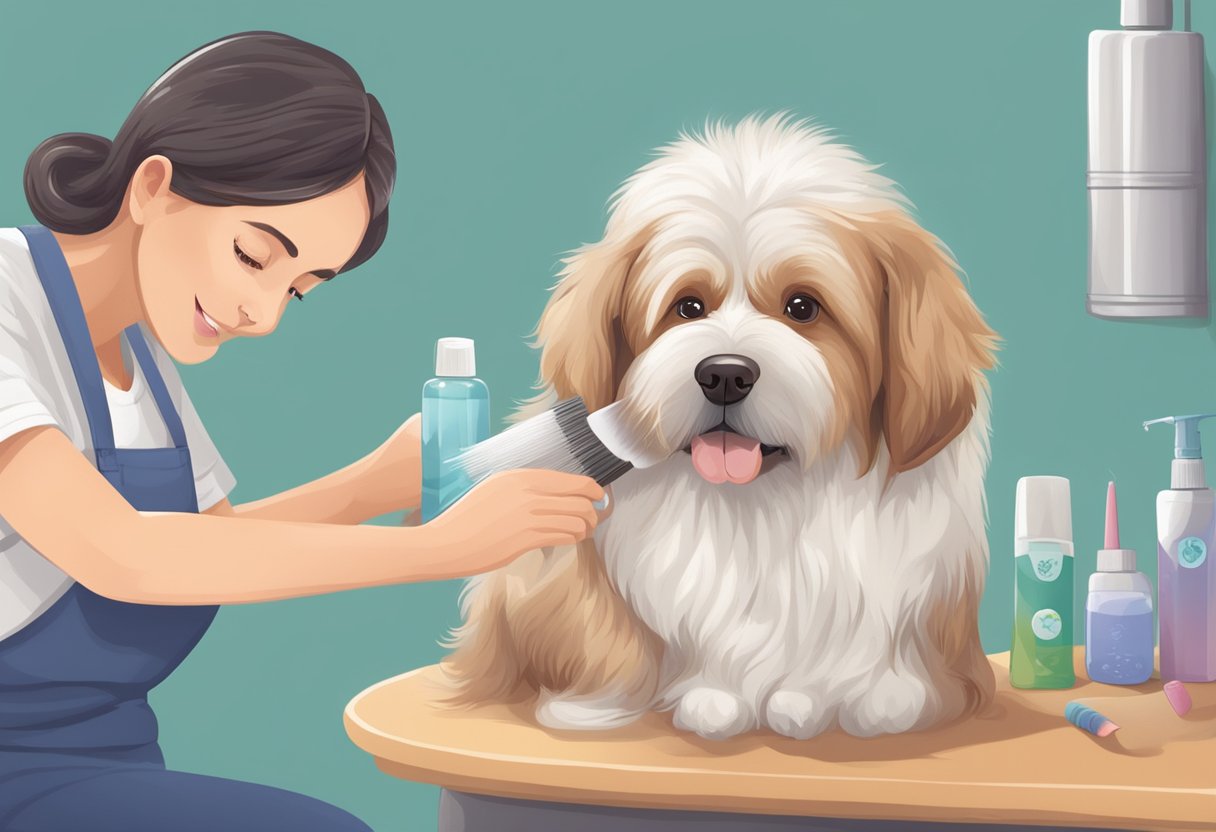
When grooming dogs with floppy ears, it’s crucial to address sensitivity, prevent wax build-up, and tackle matting for your dog’s comfort and health.
Handling Sensitivity and Pain
Your dog’s ears are delicate, so handle them gently. If your dog shows signs of discomfort or pain when you touch their ears, it could indicate an underlying issue. Consult with a vet to rule out conditions like ear infections, and use treats and positive reinforcement to make ear grooming a more pleasant experience.
Dealing with Excessive Ear Wax
Excessive ear wax can lead to infections. Clean your dog’s ears regularly with a vet-approved ear cleaner.
Apply the cleaner to a cotton ball and wipe away wax build-up without probing too deep. Observe for signs of excess wax, such as a strong odor or discharge, and seek veterinary care when necessary.
Addressing Matting and Tangles
Floppy ears are prone to matting and tangles, which can trap moisture and debris. Regular brushing is vital.
Use a fine-toothed comb to gently remove mats and tangles from the ends to the roots. Consider seeking professional grooming services to safely trim away mats without harming your dog in severe cases.
Maintenance and Aftercare
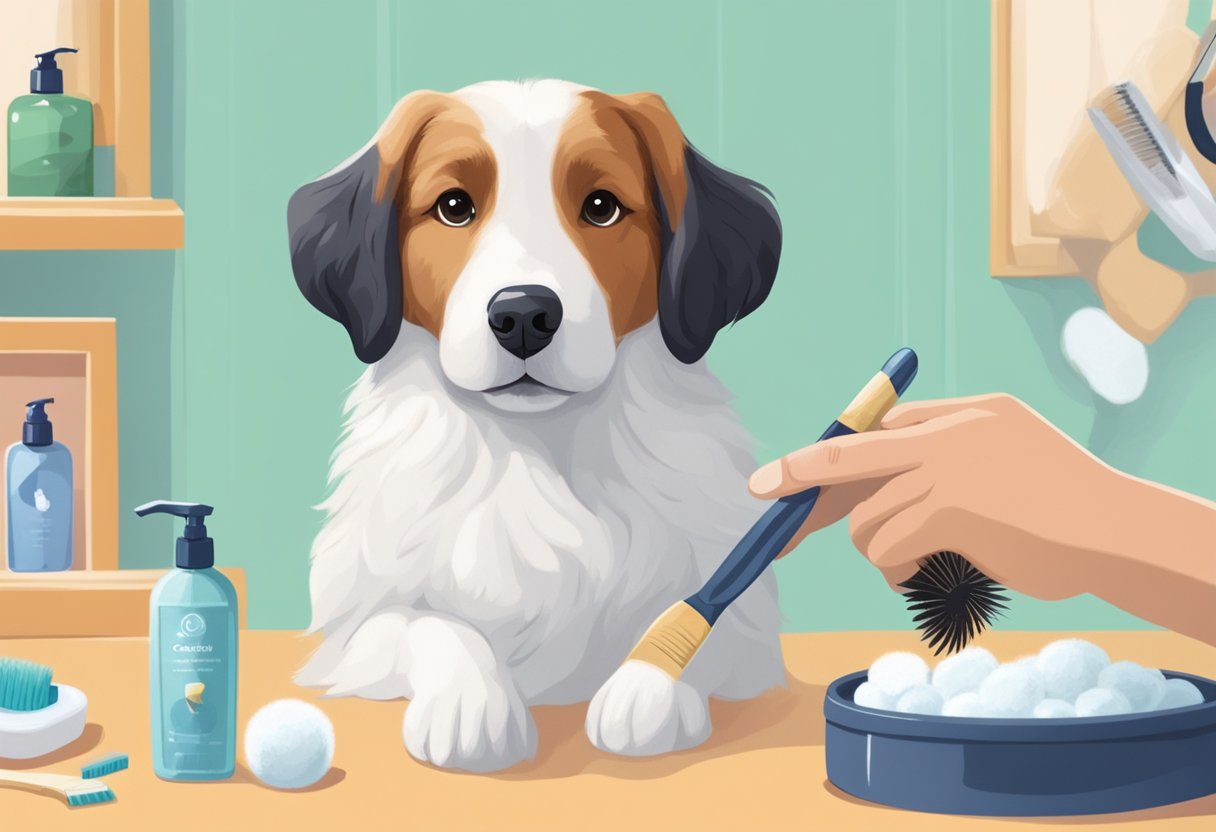
Proper maintenance and aftercare are essential for keeping your dog’s floppy ears healthy following grooming. Attention to these details can prevent infections and ensure your dog remains comfortable.
Post-Grooming Ear Care
After grooming, it’s important to gently clean the inside of your dog’s ears with a recommended natural ear cleanser. Use a soft cloth or ear wipes designed for dogs to remove any debris or residue. Be sure to dry the ears thoroughly, as moisture can lead to bacterial growth and potential infections.
Monitoring for Ear Health Issues
Regularly check your dog’s ears for signs of infection, such as redness, swelling, or an unusual odor. Also, watch for any changes in behavior that indicate discomfort, like excessive head shaking or scratching. If you notice any concerning symptoms, consult your veterinarian to address the issue before it worsens.
Lifestyle Considerations
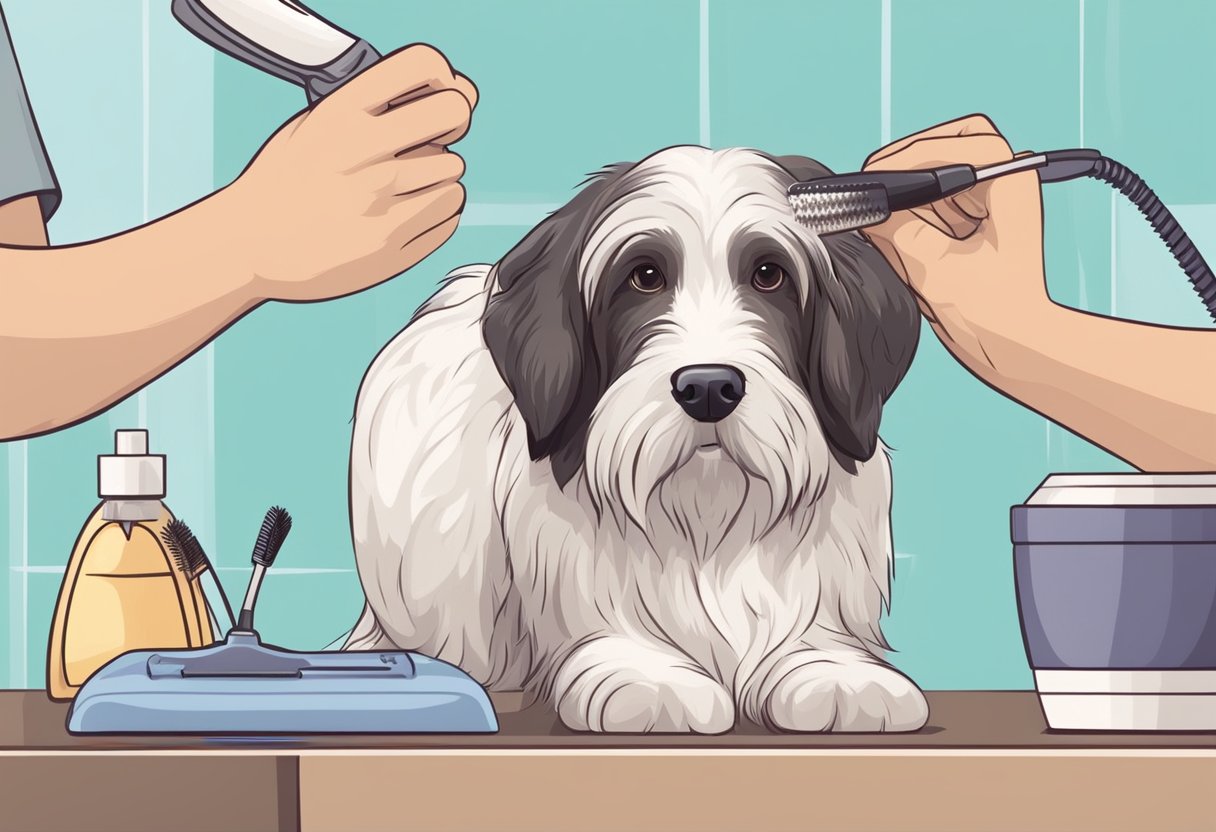
When caring for dogs with floppy ears, your dog’s lifestyle, including their diet and daily activities, plays a significant role in their overall ear health.
Diet and Nutrition Impact
A balanced diet is crucial for maintaining your dog’s ear health. Specific nutrients can help strengthen their immune system, preventing infections that might affect their ears. Ensure that your dog’s food includes:
- Omega-3 fatty acids: to help reduce possible inflammation.
- Vitamins E and C: antioxidants that can boost ear health.
Exercise and Outdoor Activities
Regular exercise keeps your dog healthy and exposes their ears to dirt and pathogens, especially if they enjoy romping through tall grass or swimming. Keep these points in mind:
- After outdoor activities: always check your dog’s ears for debris and moisture.
- If your dog swims, dry their ears thoroughly to prevent moisture buildup, which can lead to infections.
Moreover, as a reminder, a proactive approach to your dog’s ear care can help stave off potential issues and keep their floppy ears perky and healthy.
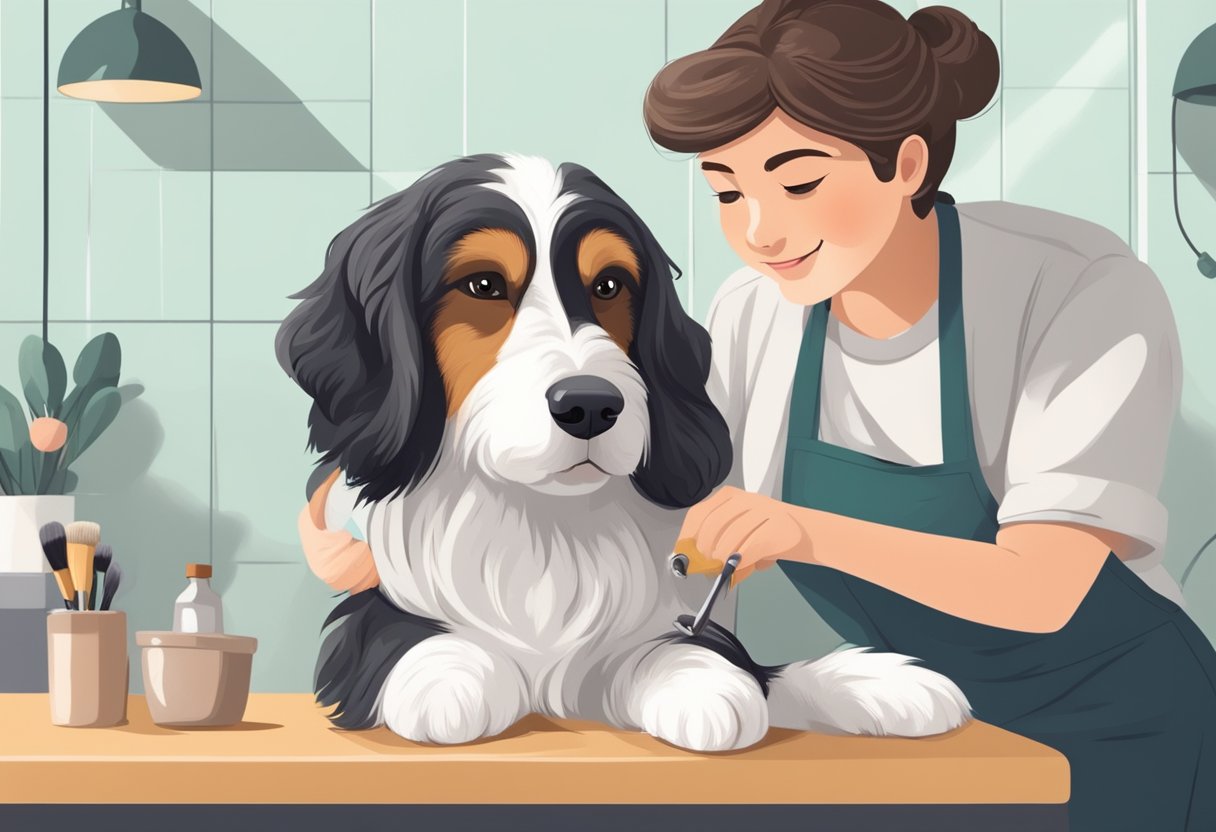
Wrapping It Up
Grooming dogs with floppy ears need extra care. Keep ears clean and dry to prevent infections. Trim ear hair and check for ticks or debris.
Be gentle and reward your dog for cooperation. Regular grooming keeps floppy ears healthy. Enjoy bonding with your dog during grooming sessions!
Frequently Asked Questions
What is the best method for cleaning a dog’s floppy ears?
The best method involves gently wiping the inside of the ears with a cotton ball or a soft cloth dampened with a suitable vet-approved ear-cleaning solution. For more thorough guidance, refer to an easy guide to cleaning your dog’s ears like a pro.
How can I prevent ear infections in dogs with floppy ears?
Preventing ear infections starts with regular cleaning to remove debris and wax. Additionally, keeping the ears dry and checking frequently for signs of irritation or unusual odors can help. Consulting with a veterinarian is recommended for a routine tailored to your dog.
What are some recommended ear-plucking techniques for dogs with long, floppy ears?
Ear plucking should be done carefully to avoid discomfort. Using ear powder to grip the hairs and tweezers to pluck them can be effective. Understand the risks involved with ear plucking before attempting this grooming technique.
Can you provide tips for bathing a dog with floppy ears while avoiding ear-related issues?
When bathing your dog, avoiding getting water in the ears is important. Placing cotton balls in the ears during the bath can help protect them, and you should always carefully clean and dry the ear’s outer part. For more details on keeping ears safe during bathtime, check out some instructions from Wag!.
What grooming styles are suitable for dogs with floppy ears to maintain cleanliness and health?
Trimming the hair around the ears to promote better airflow can help keep them dry and clean. Choosing a grooming style that doesn’t allow hair to fall into the ear canal can also reduce the risk of infection.
What is the proper way to dry a dog’s floppy ears after swimming or bathing?
After your dog swims or bathes, it’s crucial to dry their ears thoroughly. Gently pat the ears with a towel and then use a blow dryer on a low, cool setting to dry them fully, being mindful not to direct the airflow into the ear canal.
Learn More About Dog Care!
Discover gadgets like this that simplify your life with dogs. Find tools for easier, more enjoyable pet care. Unlock essential dog care tips with us. Join our Facebook, Instagram, and Twitter for practical advice, real stories, and a community focused on better dog care.
Facebook: https://www.facebook.com/1LWMD/
Instagram: http://instagram.com/lifewithmydogs2
Twitter : https://twitter.com/LifeWithMyDogs9
Learn more tips about dog care and more with us – where every dog’s health is a priority.
